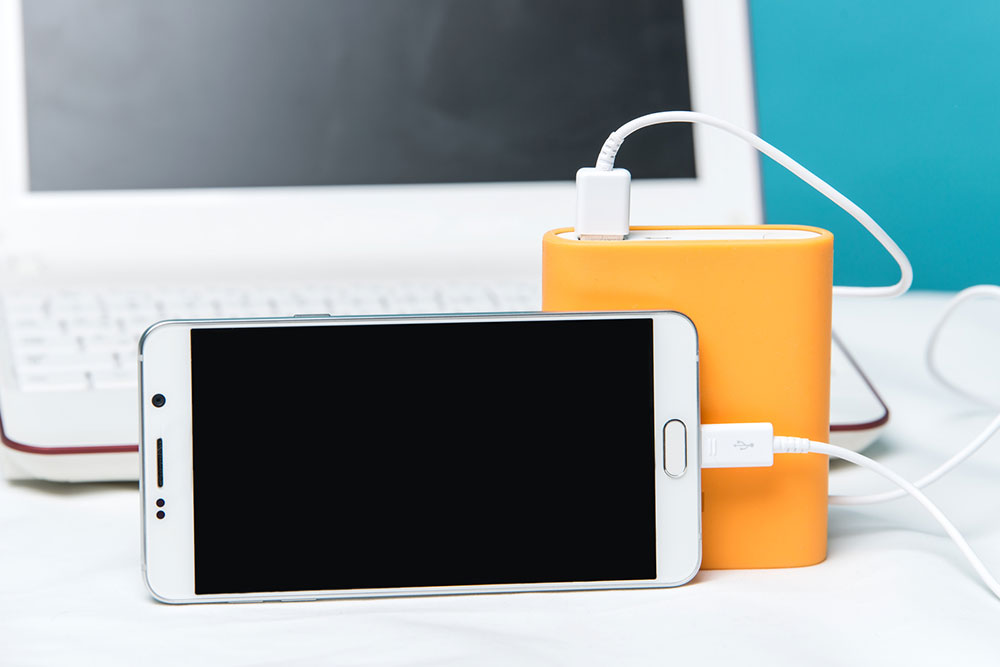8 common mistakes to avoid when charging phones

Mobile phones have become an integral part of people’s lives, so much so that they depend on them for many things, from paying bills and ordering food to checking emails. The phones’ batteries will inevitably drain out quickly, and this might happen for many reasons, like overcharging them. That’s not all; people make a few more common mistakes when charging their phones that should be avoided to maximize battery life.
Mistakes to avoid
Here are a few mistakes to avoid when charging one’s phone:
1. Charging it all day long
Most people assume that to optimize a phone’s battery and ensure great performance, they must charge it fully. However, experts suggest that battery performance peaks between 30 and 80 percent. So, yes, your phone can outperform even at a 30 percent charge. Hence, achieving the 100% charged mark only deteriorates its battery health.
2. Charging when the battery drains out
On the flip side, some people find it a task to charge their phones. So, they only put it on charging when the battery drops to zero. Ideally, one must immediately charge the phone when one receives an alert for battery-saving mode. On most phones, this option activates when the phone battery is between 15 and 20 percent full. When that happens, one must plug it in and leave it to charge. It has been noted that the appropriate load percentage for phones ranges between 20 and 80 percent. Many smartphones lag as they hit the final number. The device’s autonomy drops if it is not charged before it has a minimal energy level or is always charged to 100%.
3. Using the phone while charging
While it is understandable to want to use one’s mobile to manage tasks and scroll through social media, even when the phone’s battery is at an alarming 1%, it is not very wise. It is even worse if one plugs in their phone for a charge and continues using it. And unfortunately, this is one of the most common mistakes people make when charging their phones. Instead, when the phone’s charging, it should be left aside. Using the phone while charging spikes its temperature and strains the processor, screen, and battery. So, planning one’s phone time is best so that it is not overworked.
4. Using cheap chargers
While there are a lot of inexpensive charging cables and adapters available on the market that do the job, they are not of the best quality and must be avoided at all costs. Buying a charger that the phone’s brand does not provide is one of the biggest mistakes one can make. Most manufacturers provide chargers and connectors in the device’s box. So, it is recommended to only use those to charge the phone.
Suppose one loses or forgets to carry the charger. In that case, it is recommended to go to the official or reputable retailer and look for a charging wire and adapter compatible with one’s phone. It holds for both components. Name-brand chargers have circuits in them. They turn off when there’s an excessive power draw. They shield the phone battery from overheating, breaking, or overcharging and damaging it.
5. Using a phone case while charging
Phone cases are an excellent way to add an extra layer of physical security. But while charging, the phone covers can lead to temperature issues. Phones emit heat when charging. So, if one does not remove the charging case, this heat can affect the battery and damage the phone. So, it is recommended that the case be taken off while charging. The phone requires some heat displacement to avoid damage. Once charged, put the case on only when the phone cools down.
6. Using cheap power banks
One does not necessarily have to avoid power banks, but it is better to know that power banks from inferior manufacturers do not have overcharge protection. This causes a similar problem as with inexpensive chargers. So, when looking for a suitable power bank for a phone, avoid those with a quick charge option unless they come from a brand one trusts. Rapid charging sends too much electricity to the phone, which can result in battery damage. The high voltage can also shorten the battery’s life.
Further, quick-charging power banks and cables state they charge the first 80 percent rapidly because their onboard slip slows the charging when it reaches higher levels, where overcharging is a prominent issue.
7. Using wireless chargers
Wireless chargers heat the phone more than a USB-C cable. Fortunately, the heat generated is not much, and certain measures can help one keep the phone cool to prevent damage to the battery. So, avoid using the phone while on charge, as it will further heat the battery. In addition, remove the phone from the case to charge it wirelessly. At all times, monitor the phone’s charging wirelessly to be on the safe side. There is a probability that the wireless charger may excessively heat the phone.
8. Charging the phone in the wrong places
One must be cautious when charging the phone because failing to do so can affect the battery capacity. Phones have a temperature range within which they function normally. So, charging the phone in a hot area increases the temperature and stresses the battery. Conversely, charging the phone in critically low temperatures, such as near an air conditioner, can also pose issues for the battery.